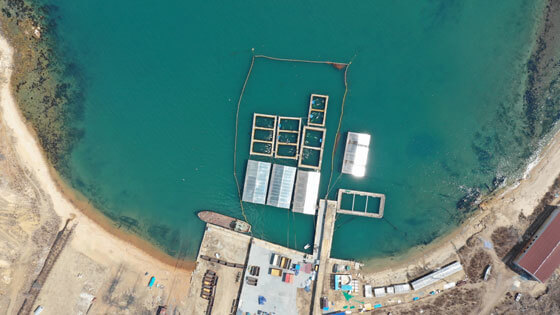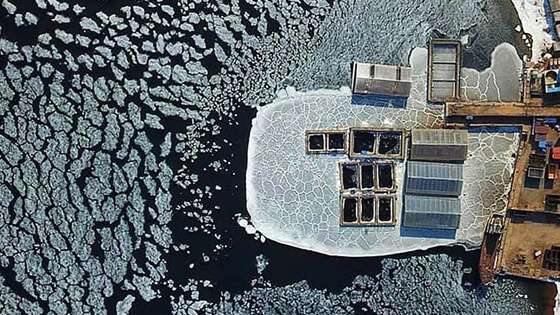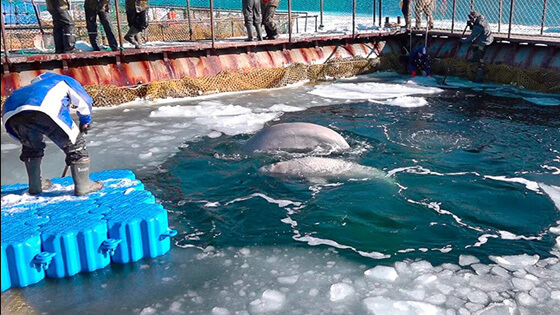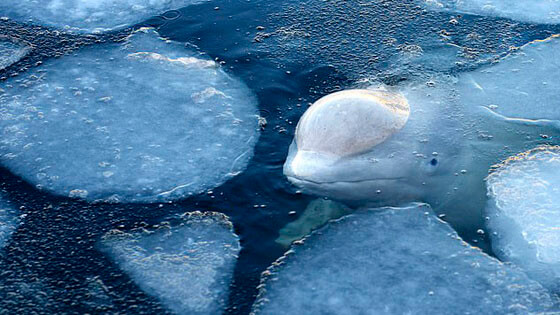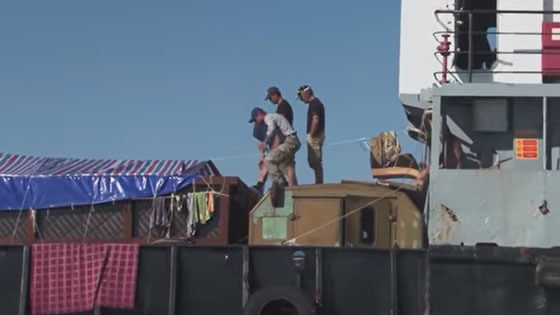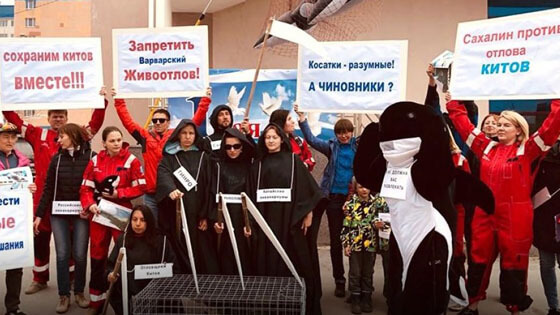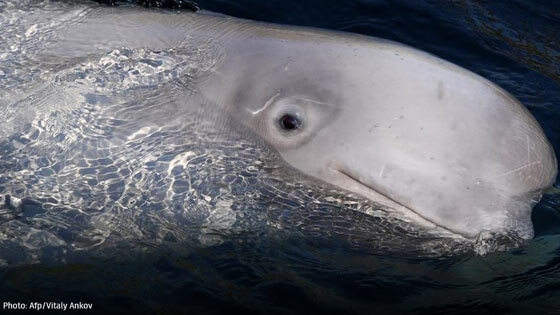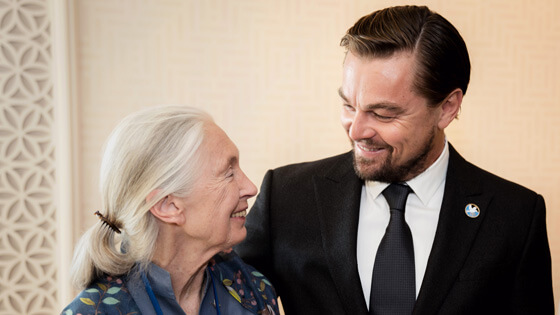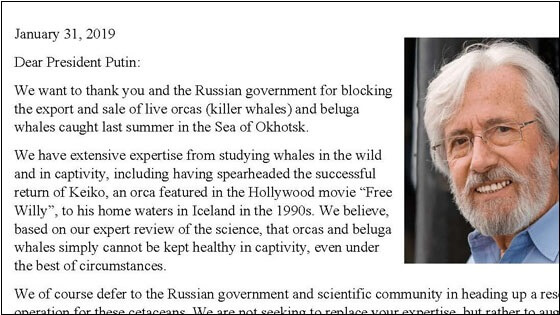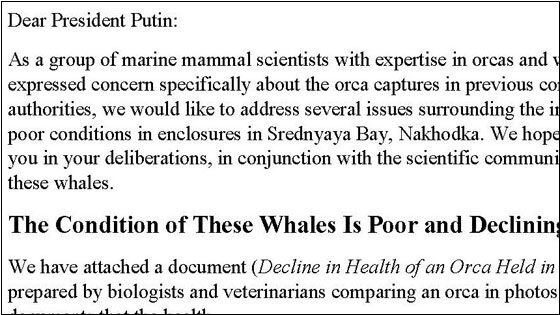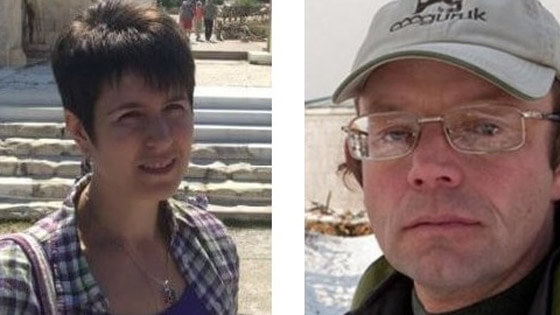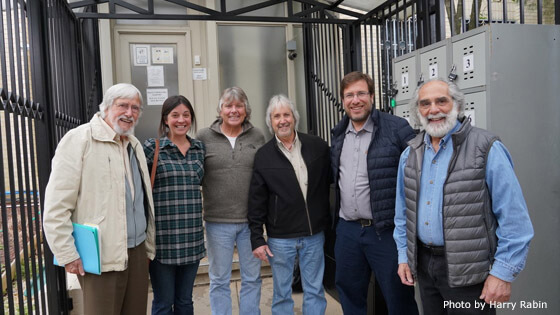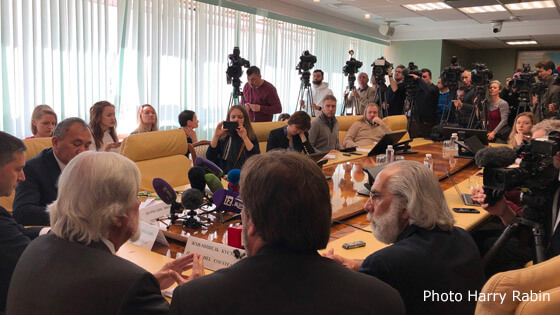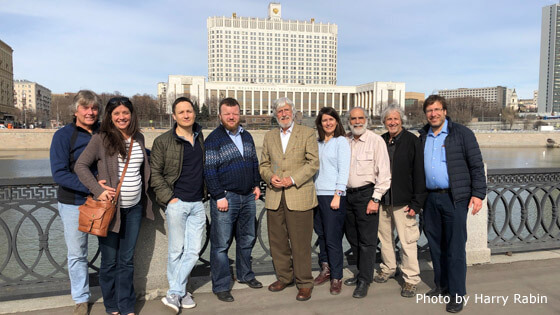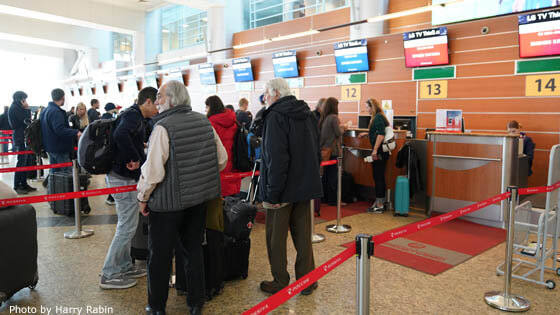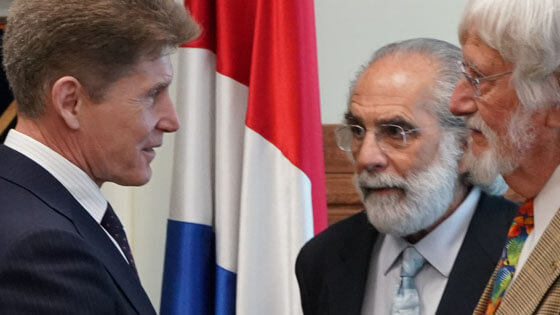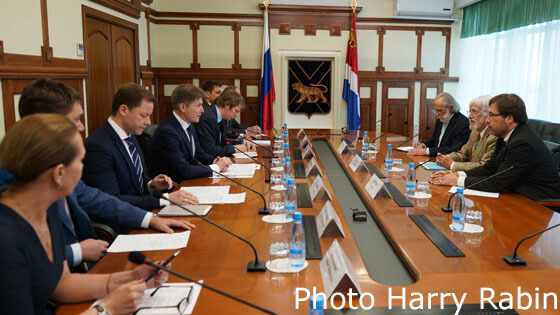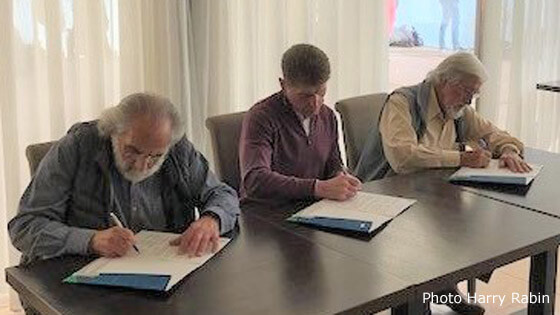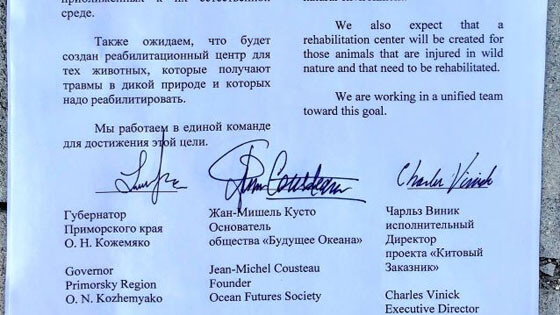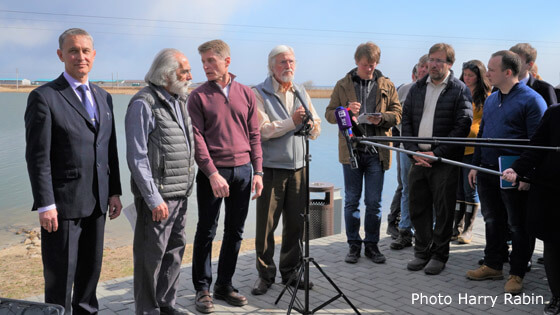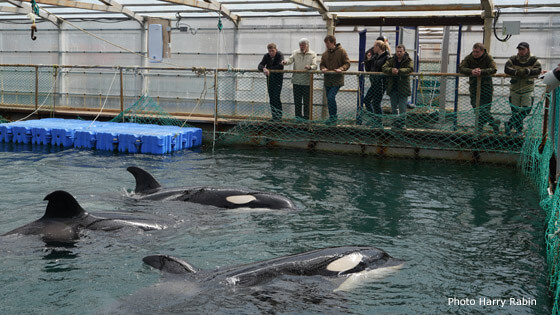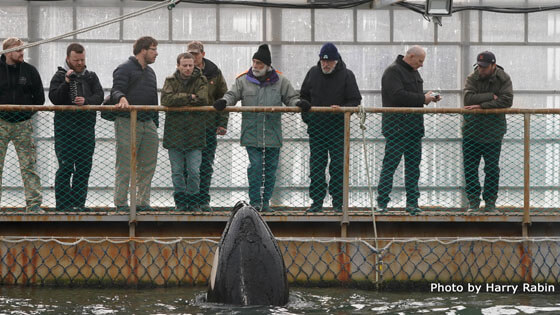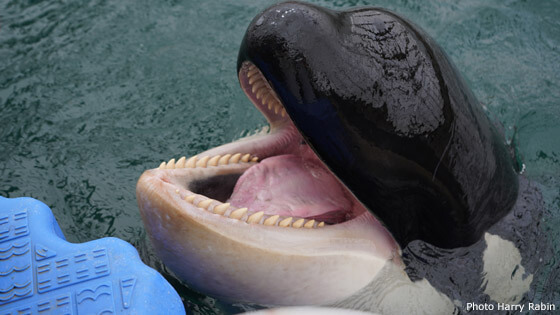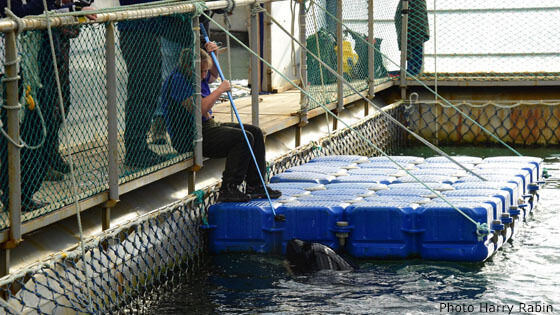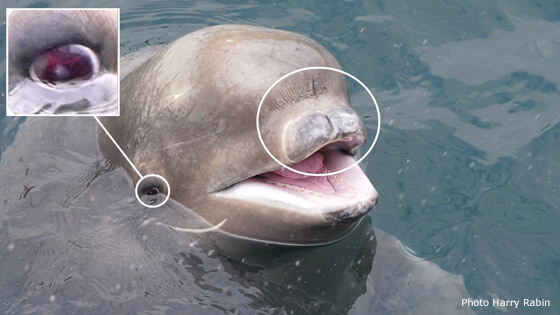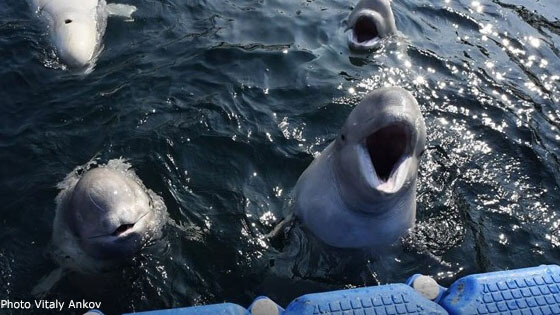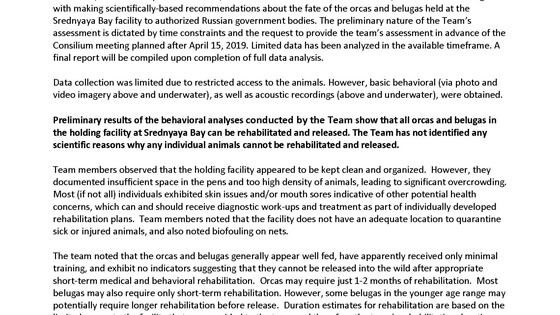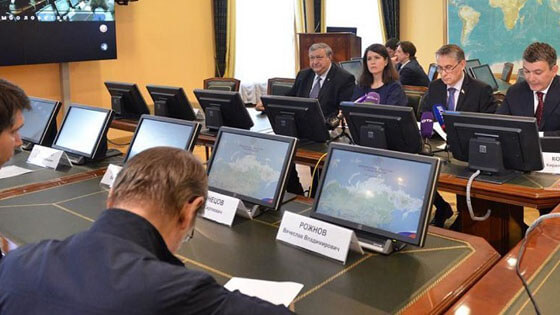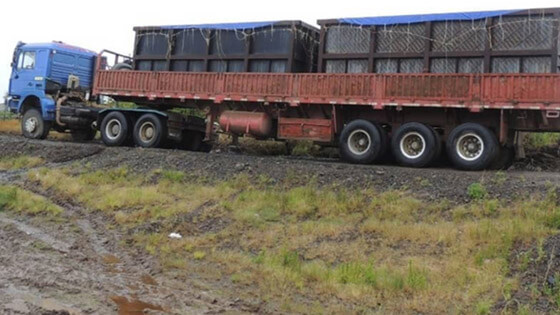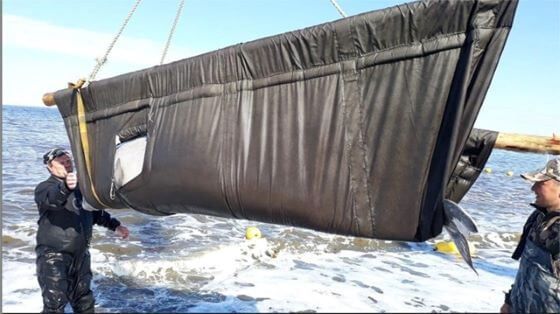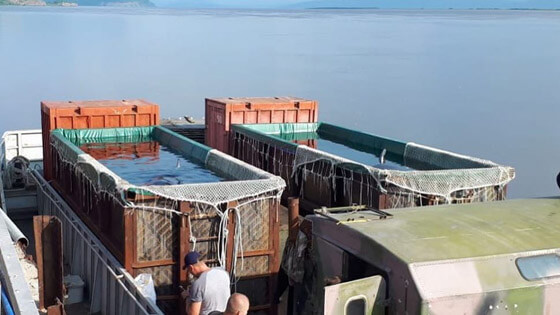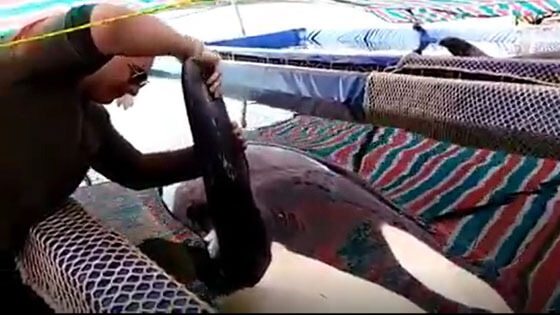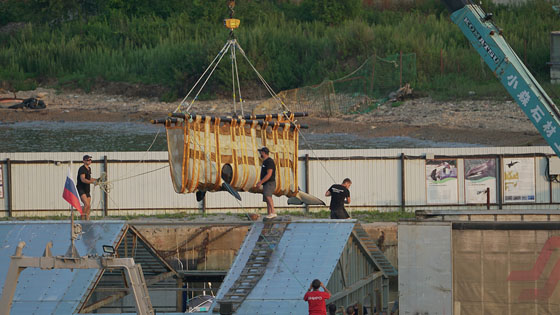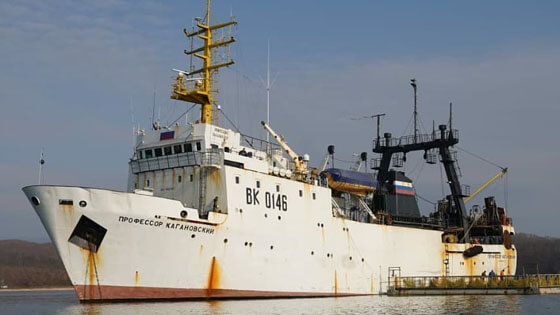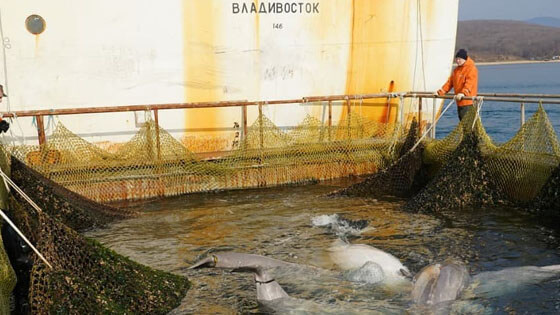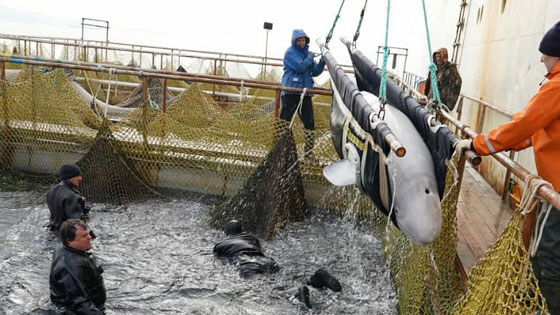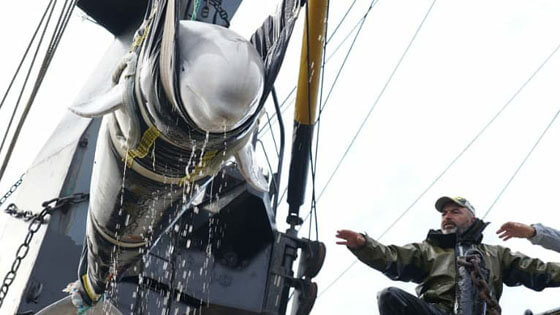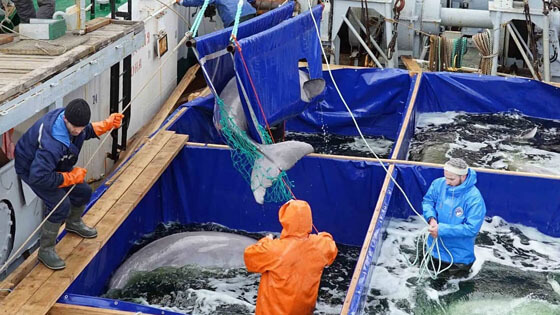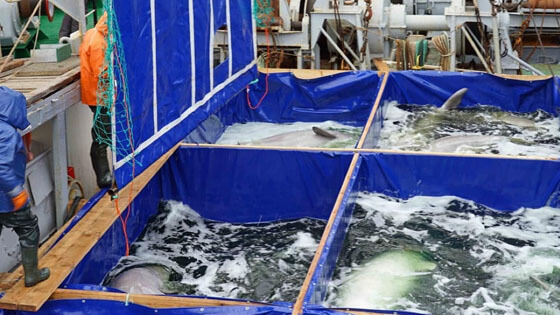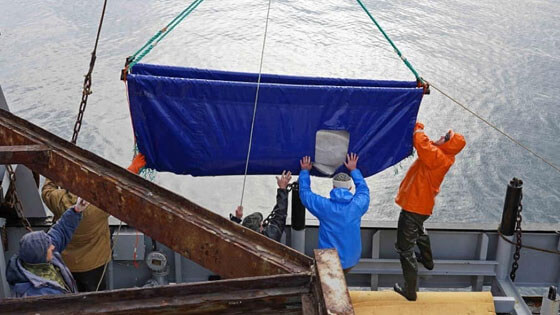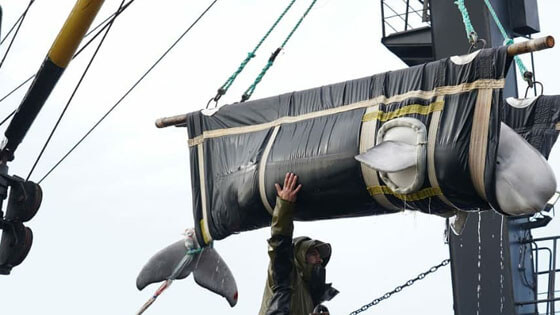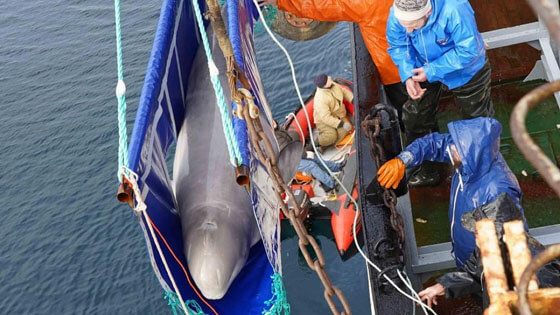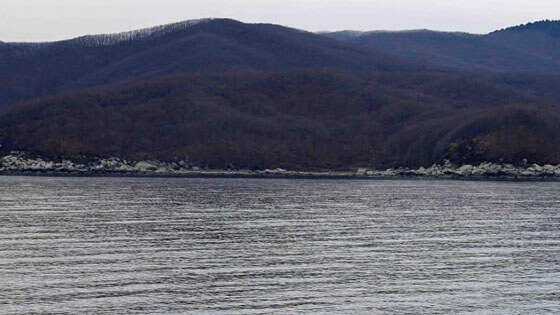How 97 captive orcas and beluga whales were returned to their ocean home.
This is the story of the biggest whale rescue in history – of the Whale Sanctuary Project’s work with the Russian government and Russian animal protection groups to return to the ocean 10 orcas and 87 beluga whales who had been captured illegally for sale to marine entertainment parks in China. On November 10th 2019, the last group of whales were back where they belonged and the notorious “whale jail” was finally closed. Here is how it all unfolded:
Part One: The Whale Jail at Srednyaya Bay
In November 2018, the Russian media became aware of a largely secret operation being conducted in a quiet area of the country’s Far East coast, known as Srednyaya Bay, about 115 miles north of Vladivostok. The compound included a series of sea pens containing more than 100 orcas and beluga whales. The sea pens were already starting to freeze over and the beluga whales were beginning to show signs of frostbite.
As news of this “whale jail” began to spread through the Russian media and then the international media, vigorous protests erupted at home and abroad.
For more about the capture of young orcas from their families:
* Novaya Gazeta writes about the companies that capture the whales and how they profit;
* Scuba Film Factory filmmakers go undercover to follow the kidnappers;
* Hakai Magazine writes about the growing market for these captive orcas and belugas.
Part Two: The World Reacts
In January 2019, news of the whale jail was spreading rapidly around the world and major media were starting to tell the story. Free Russia Whales, a network of Russian animal protection groups, launched a petition that quickly garnered hundreds of thousands of signatures. Letters of protest poured into the Kremlin.
In January, Charles Vinick (Whale Sanctuary Project), Jean-Michel Cousteau (Ocean Futures Society), David Phillips (Earth Island Institute) and Roger Payne (Ocean Alliance) wrote a letter to President Putin, offering our collective assistance in assessing the condition of the whales with a view to helping return them to the ocean.
Over the next two months, we received informal indications that our assistance might be welcomed. In response, we began to organize an international team of experts who could take part in a visit to the whale jail in Srednyaya Bay on Russia’s Far East coast. And at the end of March, we received formal permission to visit Russia and were invited to Moscow to meet with the Minister of Natural Resources & Environment.
Also, see article by National Geographic, including interview with Jeff Foster, our Transport and Rehabilitation Coordinator.
Part Three: Whale Sanctuary Project Goes to Russia
Our diplomatic team arrived in Moscow on Wednesday April 3rd for a meeting on Thursday with scientists and government officials, who wanted to hear our ideas as much as we wanted to understand their perspective on the capture of the whales and to have a joint discussion of how we should proceed. The governmental meetings were presided over by Minister of Natural Resources & Environment Dmitri Kobylkin and were followed by a joint press conference to announce that our team was working with the Russian government to determine what could be done for the whales. As a symbol of welcome, the Minister presented Jean-Michel Cousteau with a beautiful ammonite fossil.
Then it was on to Vladivostok, the capital of Primorsky Region, at the invitation of Governor Oleg Kozhemyako, who introduced us to his team and put them at our disposal to provide guidance and liaison during our visit to Srednyaya Bay.
The following day, Saturday, we drove up the coast to the port city of Nakhodka, close to Srednyaya Bay, where we sat down with Dr. Vyacheslav Bizikov, Deputy Director of the Russian Federal Research Institute of Fisheries and Oceanography, to negotiate exactly what our team would be allowed to do in terms of working with the whales.
At the end of the day, the Governor invited Charles Vinick and Jean-Michel Cousteau to an overnight visit at his country retreat, where together they drafted an agreement to work together toward returning the whales to the ocean. Then, on Monday, back at Srednyaya Bay, and in the presence of the Russian press, all three signed a formal agreement stating that “our goal is to release the cetaceans back into their natural environment” and then held a press conference to announce this intention to the Russian people and the world.
Video slides in the slideshow by Harry Rabin.
Part Four: At the Whale Jail
“It was truly disturbing to see 97 whales confined in such a small space,” said Jeff Foster, our rescue and rehabilitation expert, when the team was admitted to the whale jail.
We were there to assess, as best we could (given that our access was strictly limited by the captors), the health and behavior of the animals. Many of them were showing signs of frostbite and skin and eye infections. But these conditions were treatable, and our initial observations were that the whales were all in reasonable health and showed no physical signs of conditions that would preclude them from being returned to the ocean.
As for their psychological and behavioral condition, Jeff put it this way: “The bad side was that they were all languishing in extreme boredom. They weren’t getting any enrichment, training or exercise. And the good side, on the other hand, was that they were all languishing in extreme boredom and not getting any enrichment, training or exercise.”
In other words, because of this general neglect, the whales had never bonded with humans, and the upside of this was that they would likely re-adjust more easily to being back in the ocean and would seek out companionship with their own kind rather than with humans. So, while this treatment made their life at the whale jail even more miserable, it might be something of a blessing in disguise.
Video slides in the slideshow by Harry Rabin.
Part Five: Our Report to the Russian Government
On our return from Russia, we reported to the Russian government that “the team has not identified any scientific reasons why any individual animals cannot be rehabilitated and released.” (Details of our report are in this post.)
A few days later, the Consilium of the Russian Federal Research Institute of Fisheries and Oceanography (VNIRO) mirrored our assessment, announcing that “The general recommendation of the scientists now is that the whales should be released around the same location where they were captured.”
Over the following months, there was much internal government discussion, along with pressure from the four companies that had captured the whales in the first place and who were now hemorrhaging potential profits while continuing to have to care for the whales.
At one point, a proposal was put forward to open the gates of the sea pens and simply release the whales into Srednyaya Bay. However, we made it clear that even if the government were not to accept our full suite of proposals, the option of releasing the whales into the bay should be rejected at all costs. They should, instead, be transported back to the region where they were captured in order to have the best chance of re-connecting with their families.
Video slides in the slideshow by Harry Rabin.
Part Six: The First Whales Return to the Ocean
On June 20th, the first eight whales – two orcas and six belugas – began an 1,100-mile, six-day journey to the Shantar Islands in the Sea of Okhotsk, the area from which they had been caught the previous year.
The releases did not all go perfectly, especially at first when the whales were clearly severely stressed by a storm-ridden journey. The Russian government had contracted with the same fishing companies who had captured the whales the previous year to transport the whales back to the waters from which they had been taken. And while there was certainly some logic to doing it this way, the government did not accept, or believed they could not execute, some of our recommendations for the releases. But by now (mid-June), time was pressing if the whales were to be released before another icy winter set in, so it was urgent to get the transport and release program underway.
Over the next two months, all 10 orcas and 12 of the belugas were transported back to the region from which they had been taken and were successfully returned to the ocean.
Overall, this represented exceptional progress, and seeing these whales swimming exuberantly in the open sea for the first time in almost a year was truly heartwarming.
In the final video slide in this section, you can see and feel the joy of the whales as they head out into the open ocean – their home.
Video slides in the slideshow by VNIRO and Greenpeace Russia..
Part Seven: The Whale Jail Is No More!
The last group of beluga whales from the “whale jail” in Russia have been returned to the ocean. The notorious sea pens that housed 10 orcas and 87 beluga whales who had been captured for sale to marine parks in China are now closed.
On November 10th, the Russian Research Institute of Fisheries and Oceanography (VNIRO) reported that they carried out the release of 31 beluga whales into the Bay of Uspeniya Lazovsky in the Primorsky Krai district in accordance with the instructions of President Vladimir Putin and the Russian government.
Here are three short videos from the Russian TV service Ruptly. The first two show the whales being transported in floating sea pens from the facility at Srednyaya Bay to one of the ships that would take them to the release area. The third video shows them being lowered into the Bay of Uspeniya Lazovsky, where they swim away.
The rescue and release of 97 captive whales is a remarkable and historic achievement in which many people played a key role, including:
- The Russian activists who brought the plight of these whales to the world’s attention and maintained steady pressure for their release;
- The expert members of the international team assembled by the Whale Sanctuary Project to assess the health of the whales in their sea pens and recommend protocols for their release;
- The Russian scientists whose expertise was critically important to the releases;
- Our Executive Director Charles Vinick, who steered our whole Whale Aid Russia operation, and Jean-Michel Cousteau, who opened doors to the highest levels of the government;
- And the generous supporters of the Whale Sanctuary Project, without whom none of this would have been possible. Thank you so much.
Here are some photos of the transport and release, courtesy of the Russian institute VNIRO:
Thank you
Today, because of the care and concern of people all over the world, these whales are now back home in the ocean, where they belong.
Your continuing donations are critical to ensuring that more whales will not be captured in the future for sale to marine entertainment parks in China. Thank you for caring.
This post is but a brief summary of the Whale Aid Russia program. For more details go to any of the dozens of posts, which start here, and select an item from the right-hand navigation.
Left: Letter of Appreciation from the Ministry of the Environment & Natural Resources in Moscow. (Go here for pdf and translation.)
